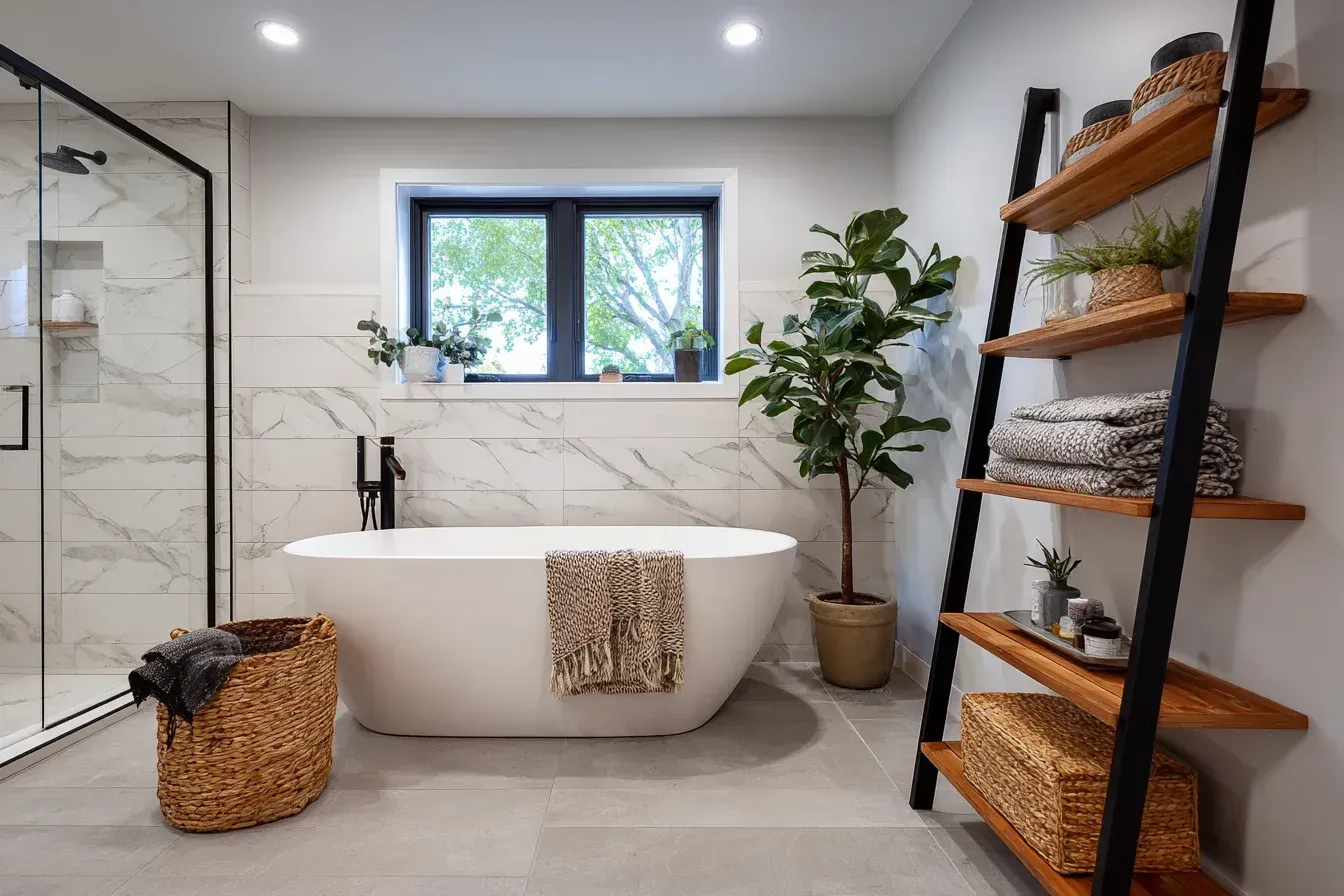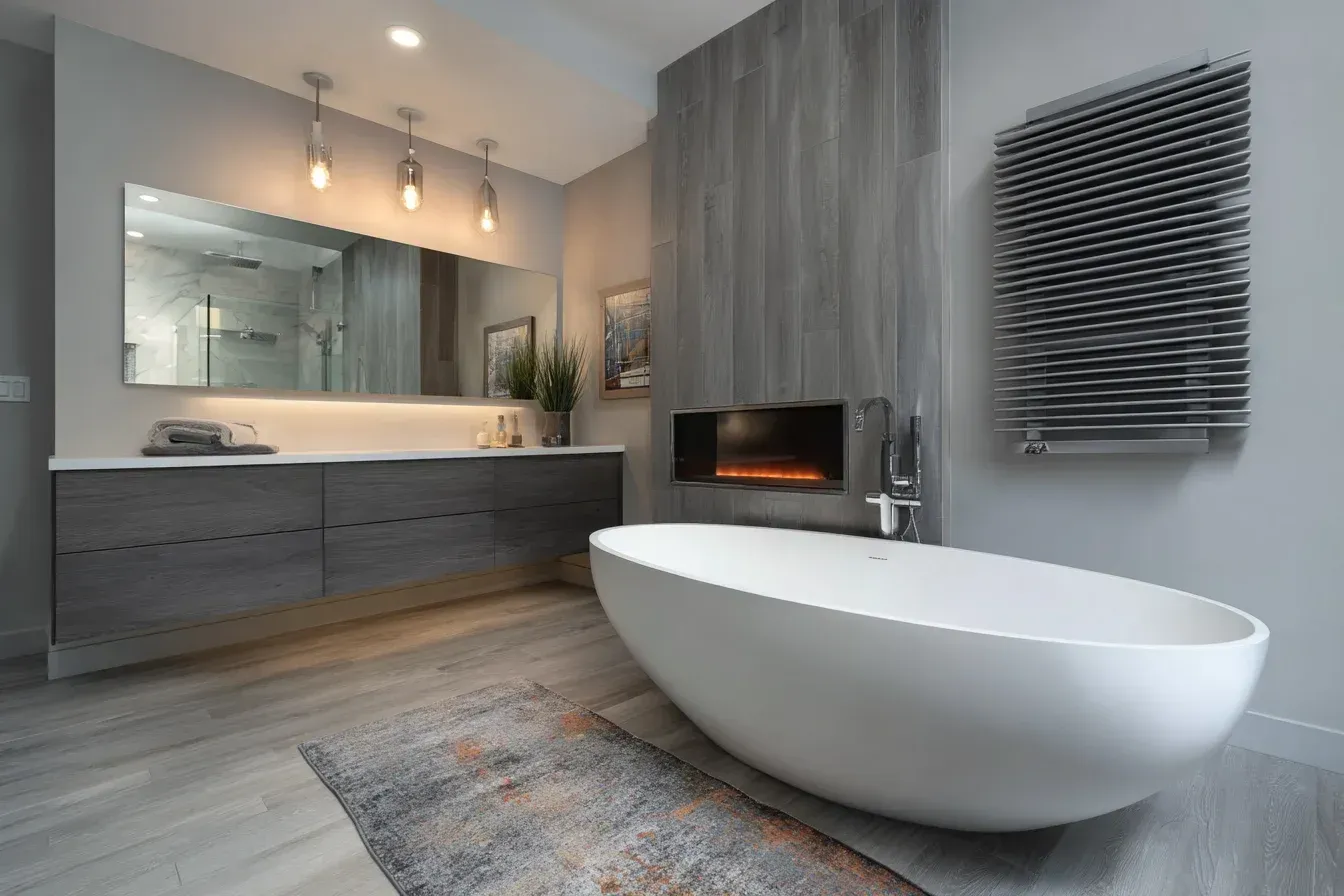How to Plan a Bathroom Remodel: A Complete Step-by-Step Guide
Planning a bathroom remodel can feel overwhelming, especially if it’s your first time renovating a major space in your home.
Bathrooms are deeply functional, heavily used, and require meticulous coordination between plumbing, electrical work, tiling, fixtures, storage, and design. Whether you’re planning a small bathroom makeover or a full top-to-bottom renovation, a clear roadmap is essential for a smooth and stress-free process.
This complete step-by-step guide walks you through everything you need to know when planning a bathroom remodel—from defining your goals and budget to choosing materials, scheduling contractors, and ensuring your new bathroom is beautiful, durable, and built to last.

Why Proper Planning Matters in Bathroom Renovations
Bathroom renovations are among the most complex home projects. Even small changes require thoughtful planning, because:
- Bathrooms involve multiple trades (plumbers, electricians, tilers, drywallers, painters, carpenters).
- The space must balance aesthetics with heavy functionality.
- Waterproofing, ventilation, and layout choices impact long-term durability.
- The right renovations significantly boost home value and daily comfort.
- Planning ahead helps you avoid delays, unexpected costs, design mistakes, and layout issues.
1. Define Your Bathroom Renovation Goals
Every successful remodel starts with clarity. Before choosing tiles or fixtures, understand what you want to change and why.
Ask yourself these key questions:
- Do I want to modernize the space?
- Am I fixing layout issues or expanding functionality?
- Do I need more storage?
- Do I want a walk-in shower, a freestanding tub, or both?
- Is this renovation for personal enjoyment, resale value, or both?
Common goals homeowners have:
- Improve lighting and ventilation
- Update outdated finishes
- Increase accessibility and aging-in-place features
- Add luxury elements like heated floors or smart showers
- Create a spa-like, relaxing environment
Knowing your goals creates a foundation for all decisions moving forward.
2. Establish a Realistic Budget
Bathroom remodeling costs can vary widely depending on materials, labour, and scope. Setting a clear budget early helps guide your design choices and prevents overspending.
Typical bathroom renovation budget categories:
- Fixtures: toilets, sinks, faucets, showerheads
- Cabinetry: vanity, storage, shelving
- Tiling: walls, floors, shower surrounds
- Plumbing & electrical work
- Labour costs
- Accessories: mirrors, towel bars, lighting
- Contingency fund (10–20%)
Tips for building a smart budget
- Allocate more funds to high-use items (e.g., vanities, faucets, tiles).
- Save money on accessories—you can upgrade them later.
- Ask contractors for detailed line-item quotes.
- Always include a safety buffer for surprises.
A well-planned budget ensures your remodel stays on track financially.
3. Measure Your Bathroom and Assess the Existing Layout
Accurate measurements are essential before choosing fixtures or creating design plans.
Take note of:
- Wall-to-wall dimensions
- Ceiling height
- Location of plumbing lines
- Existing electrical outlets
- Window and door placement
- Ventilation setup
- Clearance needed for fixtures
Decide if you’ll keep or change the layout
Keeping the same layout is usually more cost-effective. But updating the layout can dramatically improve functionality, especially if:
- The shower is too small
- The toilet placement feels awkward
- The vanity lacks storage
- You want to convert a tub into a walk-in shower
Layout decisions will drive plumbing and electrical plans, so finalize this early.

4. Choose a Bathroom Design Style
Your design style sets the tone for the entire renovation. Having a consistent theme makes selecting materials, fixtures, and colours much easier.
Popular bathroom design styles:
- Modern: clean lines, floating vanities, matte finishes
- Transitional: blend of contemporary and classic elements
- Coastal: light colours, natural textures, spa-like vibes
- Scandinavian: minimalism, warm wood, bright white
- Luxury spa: marble, soft lighting, freestanding tub
- Industrial: exposed hardware, black frames, concrete look
Create a mood board
Use Pinterest, Instagram, or design blogs to gather inspiration. This visual roadmap helps you stay consistent during material selection.
5. Select Durable, Waterproof Materials
Bathrooms are high-moisture environments. Choosing durable, water-resistant materials is essential to longevity and maintenance.
Key materials to decide on:
- Tiles: porcelain, ceramic, marble-look, textured, or zellige
- Flooring: porcelain tile, natural stone, waterproof vinyl
- Countertops: quartz, marble, granite, or solid surface
- Shower walls: tile, acrylic panels, large-format slabs
- Paint: mildew-resistant, moisture-proof options
- Cabinets: plywood or moisture-resistant MDF
Tips for selecting materials
- Choose large tiles for less grout cleaning.
- Avoid cheap cabinets—they warp easily.
- Opt for quartz counters for durability.
- Use high-quality grout and waterproofing membranes.
Material choices directly affect maintenance and lifespan.
6. Plan Your Storage Solutions
Storage is one of the most overlooked parts of bathroom design, yet it determines how your space functions day to day.
High-value storage ideas:
- Floor-to-ceiling cabinetry
- Floating vanities with deep drawers
- Medicine cabinets with hidden shelving
- Shower niches
- Pull-out organizers
- Baskets and built-in cubbies
Avoid clutter by designing storage “for purpose”
- Towels → linen tower
- Toiletries → vanity drawers
- Cleaning supplies → bottom cabinets
- Daily-use items → accessible shelves
A well-organized bathroom instantly feels larger, cleaner, and more enjoyable.
7. Focus on Lighting and Ventilation Early
Lighting and ventilation are not just functional—they significantly impact comfort and longevity.
Types of bathroom lighting
- Ambient lighting: overhead or recessed lights
- Task lighting: vanity sconces or LED mirrors
- Accent lighting: under-vanity lights, toe-kick illumination
- Decorative lighting: pendant lights or small chandeliers
Ventilation essentials
Good ventilation prevents mold, mildew, peeling paint, and tile damage.
Consider upgrading to:
- A high-powered exhaust fan
- Humidity sensors
- A window for natural airflow
- Moisture-resistant drywall
- Plan electrical and ductwork during the rough-in stage.

8. Choose Quality Fixtures That Match Your Style
Fixtures influence both the functionality and design consistency of your bathroom.
Select fixtures that align with your theme:
- Faucets
- Showerheads
- Rainfall or handheld sprays
- Toilet style
- Freestanding tub filler
- Hardware (towel bars, toilet roll holder, robe hooks)
Popular finishes
- Brushed nickel
- Matte black
- Brushed gold
- Chrome
- Oil-rubbed bronze
Choose one primary finish and keep it consistent across the whole bathroom to avoid a mismatched look.
9. Create a Detailed Renovation Timeline
A renovation timeline helps you stay organized and reduces project delays.
Typical bathroom renovation phases
- Demolition
- Plumbing rough-in
- Electrical rough-in
- Framing or layout adjustments
- Drywall and waterproofing
- Tile installation
- Painting
- Vanity and fixture installation
- Shower glass installation
- Final plumbing and electrical hookups
Allow for buffer time
Tile work, custom vanities, and glass shower enclosures often take longer than expected. Always budget extra time for these.
10. Work With the Right Contractor
Choosing the right bathroom contractor can make or break your remodel.
What to look for:
- Proven experience with bathroom renovations
- Licensed and insured professionals
- Clear itemized quotes
- Strong portfolio of recent projects
- Good online reviews
- Transparent communication
- A written contract with timelines and warranties
Red flags to avoid
- Vague pricing
- No references
- No insurance
- Pressure to sign immediately
- Lack of written agreements
A skilled contractor ensures your bathroom is built correctly, safely, and to code.
Final Thoughts: Your Bathroom Remodel Starts With a Solid Plan
Renovating a bathroom isn’t just about choosing pretty tiles—it’s a strategic process involving design, layout, plumbing, electrical work, materials, and craftsmanship.
By planning thoroughly and following a clear step-by-step roadmap, you ensure your bathroom remodel stays on budget, on schedule, and aligned with your vision.
With the right preparation, your new bathroom will become a beautiful, functional, and long-lasting space you enjoy for years to come.
Recent Posts

